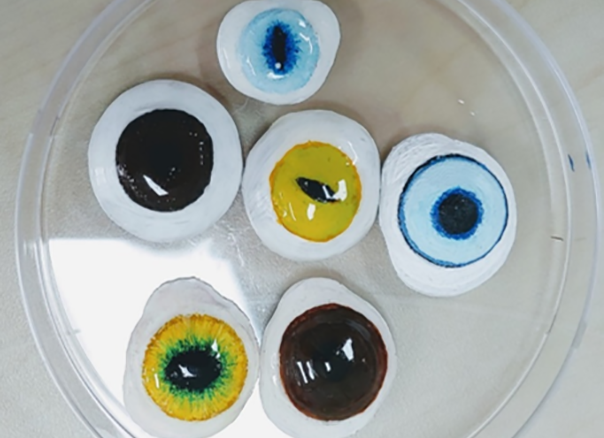China3D printingNet reported on November 26 that a London man became the first person in the world to install a 3D printed prosthetic eye.
Steve Verze received this eye today at Moorfields Eye Hospital in Finsbury, London. It has a more realistic appearance than a traditional acrylic eye and can be manufactured in a shorter time.
Professor Mandeep Sagoo, consultant ophthalmologist at Moorfields Eye Hospital, hopes that the upcoming clinical trial of 3D printed prosthetic eyes will provide the team with “strong evidence” of the value of the technology, and said it has the potential to reduce the waiting list.

Steve Verze received the first 3D printed eye prosthesis. Photo from Moorfields Eye Hospital.
Optics3D printing
Moorfields Eye Hospital claims that the delivery of 3D printed prosthetic eyes is the world’s first. Although it seems to be the case, there have been some studies in the field of optical prostheses and transplants.
For many years, the design agency Fripp Design has been cooperating with Manchester Metropolitan University and the University of Sheffield to develop 3D printed artificial eyes. In the past, the company claimed that its patented process could produce more than 120 eyes in one hour.
However, last year owner Steve Roberts announced that he intends to sell the company’s 3D printed silicone IP in pursuit of other ambitions. It remains to be seen whether the development of 3D printed eye prostheses will continue.
In 2018, Severance Hospital of Yonsei University Health System (YUHS) announced plans to commercialize its first 3D printed artificial eye as part of a research project sponsored by the Ministry of Science and Information and Communication Technology of Korea. The prototype was originally scheduled to be ready in 2020, but the hospital has not yet provided the latest information on its progress.
Elsewhere, 3D printing has previously been deployed to help reconstruct the eyes of a 47-year-old woman. Use 3D scanning and CAD modeling technology to capture the woman’s face to provide a customized eye model, and then 3D print the model through SLA to form a mold to make an artificial eye.
Although a fully 3D printed eye prosthesis may be the first for mankind, man’s best friend has already benefited from this technology. Last year, researchers at Chungbuk National University developed low-cost personalized artificial eyes for canines who lost their eyes due to incurable diseases. The 3D printed prosthesis was successfully tested on two beagle dogs and is considered to have “great potential” in veterinary applications.

The researchers’ 3D printed dog eyes proved to be cheaper and more effective than traditional similar products. Photo from Plos One magazine.
3D printingProsthetic eye
Today seems to mark the first time that 3D printed prosthetic eyes have been approved for human use as part of a clinical trial.
At present, installing traditional acrylic artificial eyes is a long and long process, and patients have to spend two hours to shape their eye sockets before they can be installed and painted. In total, this process may take about six weeks.
According to Moorfields, 3D printing provides a faster alternative, reducing the manufacturing process to two to three weeks. The initial appointment to measure the orbit was also shortened to only half an hour.
Ocupeye and Fraunhofer IGD provided their software expertise for the project, which was supported by the National Institutes of Health, Moorfields Biomedical Research Center, and Moorfields Eye Charity. Once Verze’s eye sockets were scanned and modeled with data, the customized eye prosthesis was printed by the German 3D printing service agency FIT AG.
The hospital also believes that the 3D printed artificial eye looks more realistic than the traditional acrylic eye because the light can penetrate the entire depth of the printed eye. This sentiment was echoed by Verze, who has always been “self-conscious” about his artificial limbs.
“This new eye looks great, and based on 3D digital printing technology, it will only get better and better,” he said.
Sagoo and his team at Moorfields Eye Hospital are optimistic about upcoming clinical trials and believe that the technology has the potential to significantly reduce the waiting list of patients who need eye prostheses.
(Editor in charge: admin)


0 Comments for “London man gets “world’s first” 3D printed prosthetic eye”